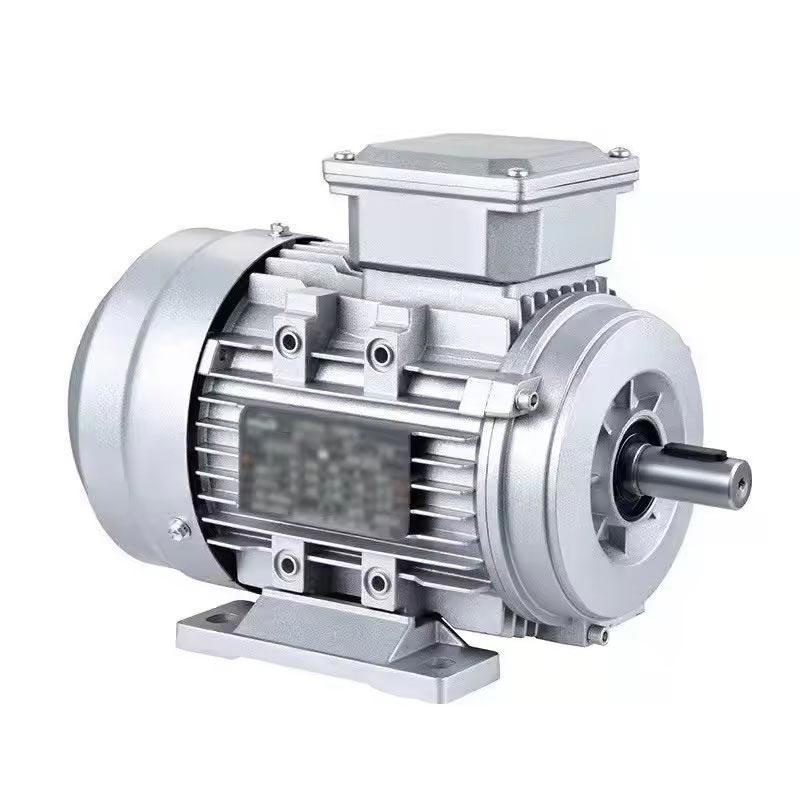How Does 3 Phase Electric Motor Work?
2025-09-12
Three-phase electric motors are the workhorses of modern industry, powering everything from pumps and compressors to conveyor belts and factory machinery. Their widespread use is due to their remarkable efficiency, reliability, and self-starting capability. For engineers, technicians, and procurement specialists, understanding the fundamental operation of these motors is crucial for optimal selection and maintenance.
The Core Principle: A Rotating Magnetic Field
The heart of a three-phase motor's operation lies in its ability to create a rotating magnetic field without any physical movement. Inside the stator (the stationary part of the motor), there are three sets of windings, each physically spaced 120 degrees apart. These windings are connected to a three-phase AC power supply.
1. Phase 1 (e.g., Phase A): Receives a sinusoidal current.
2. Phase 2 (e.g., Phase B): Receives the same sinusoidal current, but delayed by 120 degrees.
3. Phase 3 (e.g., Phase C): Receives the same current, delayed by 240 degrees.
As these three alternating currents flow through the spatially displaced windings, they generate individual magnetic fields. The key is that these three fields combine to produce a single, composite magnetic field that rotates at a constant speed around the inside of the stator. This speed is known as the synchronous speed and is determined by the power supply frequency and the number of motor poles.
How the Rotor Follows the Field
Inside this rotating magnetic field is the rotor, typically a squirrel-cage type made of conductive bars short-circuited by end rings. The rotating stator field cuts across these conductive bars, which induces a voltage and, consequently, a current within them.
These currents in the rotor then create their own magnetic field. According to the fundamental law of electromagnetism, the magnetic field of the rotor will interact with the rotating field of the stator. This interaction produces a torque, causing the rotor to turn and chase the rotating magnetic field. The rotor speed is always slightly less than the synchronous speed; this difference is called "slip" and is essential for torque production.
Key Product Parameters for Selection
Understanding these specifications is vital for choosing the right motor for your application. Our factory meticulously engineers each 3-phase electric motor to meet precise performance metrics.
Key parameters include:
| Parameter | Description |
| Power Rating | Measured in kW or HP, indicating the mechanical output power. |
| Voltage & Frequency | Standard ratings (e.g., 415V, 50Hz or 480V, 60Hz) must match your power supply. |
| Speed (RPM) | The full-load speed, which is less than the synchronous speed due to slip. |
| Efficiency Class | Defined by IE standards (e.g., IE3, IE4); higher efficiency reduces energy costs. |
| Enclosure Class | Such as IP55 (dust and water jet protected) or IP23 (drip proof), defining the environmental protection. |
| Insulation Class | (e.g., Class F) indicates the thermal tolerance of the winding insulation. |
Performance Comparison Table
| Feature | Squirrel Cage Induction Motor | Wound Rotor Motor |
| Construction | Simple, robust; most common type | More complex with slip rings and external resistors |
| Starting Torque | Standard to High (depends on design) | High (controlled via external resistance) |
| Speed Control | Difficult without a VFD | Possible by varying rotor resistance |
| Maintenance | Low | Higher due to brushes and slip rings |
| Primary Use | Pumps, fans, conveyors, compressors | Cranes, hoists, applications requiring high starting torque |
Our Hongyunteng motors are designed with a focus on robust construction and high efficiency, ensuring longevity and reduced operating costs. The durability of our 3-phase electric motor products makes them a smart investment for demanding industrial environments.
Frequently Asked Questions (FAQ)
Q: What are the main advantages of a 3 Phase Electric Motor over a single-phase motor?
A: Three-phase motors offer significant advantages, including higher power density (more power from a smaller frame), self-starting capability without needing start capacitors or switches, inherently smoother operation due to the rotating magnetic field, and higher overall efficiency, which leads to lower energy consumption for the same output.
Q: Why does a three-phase motor not require a starter capacitor?
A: Unlike a single-phase supply which produces a pulsating magnetic field, a three-phase supply naturally creates a rotating magnetic field within the stator windings. This rotating field provides the necessary torque to start the motor rotating on its own, eliminating the need for an external capacitor to provide a starting phase shift.
Why Choose Us?
For reliable and efficient industrial motion, the choice is clear. Explore the extensive range of high-performance Hongyunteng motors designed to meet the rigorous demands of your applications. Contact us at Hongyunteng Intelligent Technology (Xiamen) Co., Ltd. today to discuss your requirements. Our technical team is ready to provide expert support and help you select the perfect 3 Phase Electric Motor for your needs.
